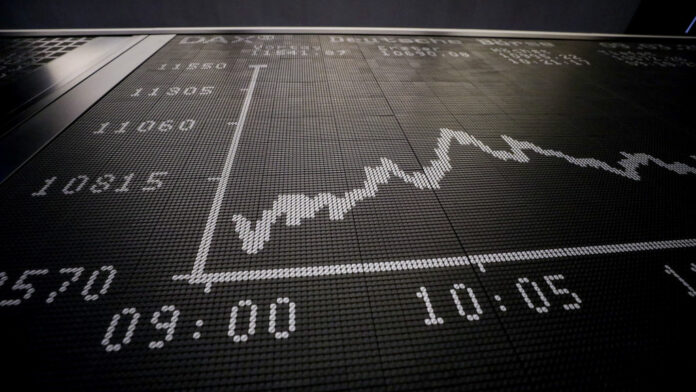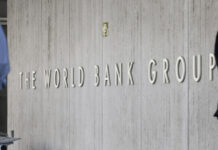
WINDFALL profits from the mining industry last year helped take some of the sting out of South Africa’s parlous national finances. The country’s 2.8% budget account surplus presented the National Budget last month was largely down to what a prominent government official in the Thabo Mbeki administration once derided as ‘exporting dirt’.
Those were the days when the government wanted South Africa to compete with China by making kichen sinks rather than exporting chrome ore. As head of the ANC’s economic transformation committee, current finance minister Enoch Godongwana was at the time involved in popularising resource rents tax (RRT) – a means of modifying the State Intervention in the Minerals Sector proposal, a form of nationalisation.
RRT was intended to levy super profit taxes on mining companies during times of elevated prices. So it’s interesting to see Godongwana now as finance minister unveiling a 1% reduction in the companies tax rate to 27%. Clearly not a Damascene conversion, the reduction in the tax rate is more recognition of the country’s economic peril. Godongwana needs South Africa’s mining industry to be the wind beneath the country’s wings.
“At different times countries try to balance the books and turn to the resources industry,” Anglo American CFO, Stephen Pearce told Miningmx in February. “At other times, they reduce taxation because they want to encourage investment,” he said.
Government’s embrace of the latter makes sense for South Africa given the momentum in the commodity market currently, but there’s no certainty as how metal prices will turn out given the price-taking nature of the sector and absence of producer power. Take, for instance, the invasion of Ukraine by Russia which has added a layer of complexity to current sector difficulties to do with supply chain disruption and inflation.
Cost inflation is the greater concern for the mining sector and was heartily picked up by investment analysts during the latest round of diversified mining company result presentations. Their worry was that unit cost increases could take the gloss off mining company margins. There are already signs investors have checked out of shares. The impact for the fiscus of a tax take would only be felt much later.
Anglo American’s 70%-owned listed subsidiary, Kumba Iron Ore seems to be a case in point. It paid out 100% of its record earnings for 2021, but it also reported a troubling 16% increase in cash costs. “We indicatively estimate higher unit costs will erode about R3bn in EBITDA and R2bn of earnings from our 2022 Kumba forecasts,” estimated JP Morgan analyst Dominic O’Kane.
Brian Morgan, an analyst for RMB Morgan Stanley’s mining team asked at Kumba’s results presentation in February whether the company had “slipped into the same old trap that when margins are good, costs inflate”. Was there some “fat in the system” that had crept into the company since iron ore price appreciation from about 2018, he asked.
Mpumi Zikalala, CEO of Kumba since the beginning of the year, seemed unconcerned. Heavy rain and Transnet’s Saldanha port restrictions had hurt volumes to an extent which had in turn increased unit costs last year. But Kumba intended to commission technology that would extract a greater yield of ore, described as “a game changer” by Zikalala. “I’m impressed with the team,” she added.
The group’s CFO, Bothwell Mazarura said, however inflation “is a concern” and “would be a factor in 2022”. Kumba has promised to reduce overheads R1bn. It has form in this having stripped out R900m in costs during 2021.
Rising costs a familiar problem
Kumba’s inflation worries are emblematic of the industry at the current point in the cycle. RMB Morgan Stanley also pointed to share price performance in the platinum group metals (PGMs) space indicating investors thought the sector had had its day in the sun. The bank said in a report in early February that PGM equities lagged a recovery in metal prices this year because the market recognised “… production slippages may be eroding some of the residual economic value to shareholders”.
Recent history shows this happens. Between 2005 and 2007 PGM prices rose steadily but margins didn’t materialise as expected because the mining companies were negatively affected by skills shortages, safety stoppages, and – in a dreary reminder that Eskom is backbeat to South Africa’s economic dirge – electricity supply interruptions.
“We are seeing inflationary pressure coming through,” Natascha Viljoen, CEO of Anglo American Platinum acknowledged in an interview with Miningmx. Steel prices are 50% higher for instance, and yet the company’s margins are relatively secure. “It’s more though what we can do to offset inflationary costs because I don’t think prices are going to soften,” Viljoen said.
That’s obviously good news for South Africa Inc. Says Pearce of Anglo American’s performance in 2021: “There was $500m in inflation that came through [in Anglo’s 2021 financial year], but then you’ve got to remember we’re getting it back in revenue”. Anglo collected about $10bn in second half revenue suggesting again the sheer buoyancy of the market is preserving the market, provided prices keep improving.
Ultimately, the question of whether South Africa’s fiscus can continue to rely on mining company profits falls to the longevity of the commodity cycle. There’s wariness about reliving the optimism of the early 2000s when companies such as BHP forecast an era of elevated metal prices. “I have resisted the temptation to call this a supercycle,” said Mark Cutifani, outgoing CEO of Anglo.
And yet … “I really can’t argue we’re at the top of the market,” said Cutifani. Anglo is working on an impressive 45% to 50% margin through 2023 based on long-term price consensus. Glencore was similarly bullish. Based on spot prices as of February, it gave an illustrative EBITDA of $26.5bn forecast for this year compared to $23.1bn in 2021.
At the time of writing more profound sanctions on Russia were being imposed by the European Union, the UK and the US. Cutifani can’t say how geopolitical tensions of this stripe may affect the commodity market or how they would reflect on the group’s contributions to South Africa. But he thinks Godongwana has sent some positive vibes barely a year after his precessor relaxed exchange control regulations
“In terms of politics all I can say is things will always change,” he said. “We don’t know whether war in the Ukraine will be a single jurisdiction crisis of something broader, but I would say South Africa’s willingness to support the mining sector has been positive.”
Tell that to Henk Gronewald, chief economist at the Minerals Council South Africa who’s of the view a 1% tax cut barely addresses the elephant in the room. Government needs a proper, joined up strategy to encourage the mining sector because at the level of production, it is shrinking.
“If you look at South Africa’s mineral production, it hasn’t really grown from 2019 or pre-Covid-19 levels,” says Groenewald. The windfall that flowed into the fiscus was “a price story”, not a production story, he said.
“So while the tax cut does send the right message, we really need more impetus from Government on broader structural reforms, infrastructure investment, regulatory certainty and predictable electricty prices.”











